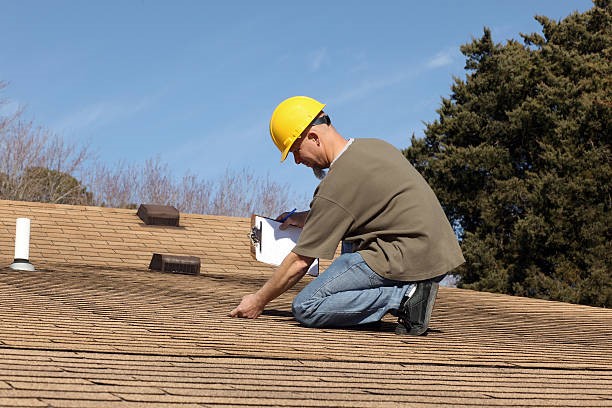When planning a roofing project, a thorough home inspection by a qualified contractor is essential to ensure the roof’s structural integrity and longevity. Whether you’re preparing for a new installation, repair, or replacement, understanding what a roofing contractor will look for during an inspection can help you be better prepared for any potential issues. In this article, we’ll discuss the key areas a contractor will examine, which can be crucial for maintaining the safety and efficiency of your home. As you consider these points, keep in mind the importance of working with reputable professionals, such as Allstar Fargo, to ensure a comprehensive inspection.
Exterior Roof Condition
The first aspect a roofing contractor will examine is the exterior condition of your roof. This includes looking for visible signs of damage, such as cracked, missing, or curling shingles. These issues can indicate underlying problems, such as water damage or poor ventilation, which can compromise the roof’s structure over time. Contractors will also assess the condition of the roof’s flashing, which is critical for preventing water infiltration around chimneys, skylights, and other roof penetrations.
Additionally, the contractor will inspect the roof’s overall slope and drainage capabilities. Proper water runoff is essential to avoid pooling, which can lead to leaks and deterioration. Gutters and downspouts will also be checked to ensure they are functioning correctly and directing water away from the foundation of your home.
Structural Integrity
Beyond the visible surface, a contractor will also assess the roof’s structural integrity. This involves checking the condition of the roof deck, rafters, and trusses, which are vital components that support the roof’s weight. Any signs of sagging or warping can indicate potential structural problems that need to be addressed promptly.
The contractor will also look for signs of water damage or rot within the roofing structure. Water infiltration can lead to significant issues, including mold growth and weakened support beams, which can compromise the safety of your home. Identifying and repairing these problems early can save you from more extensive and costly repairs down the line.
Ventilation and Insulation
Proper ventilation and insulation are crucial for maintaining a comfortable and energy-efficient home. During the inspection, the contractor will examine your attic’s ventilation system to ensure it allows for adequate airflow. Poor ventilation can lead to heat buildup in the attic, which can cause premature aging of your roof materials and increase energy costs.
In addition to ventilation, the contractor will check the insulation levels in your attic. Insufficient insulation can lead to heat loss in the winter and overheating in the summer, placing additional strain on your HVAC system. Proper insulation helps maintain a consistent indoor temperature and reduces the workload on your heating and cooling systems, potentially lowering energy bills.
Roof Penetrations and Seals
Roof penetrations, such as chimneys, vents, and skylights, are common areas where leaks can occur. The contractor will carefully inspect these areas to ensure they are properly sealed and free from damage. Any gaps, cracks, or deterioration in the seals can allow water to enter your home, leading to potential water damage and mold growth.
In addition to inspecting the seals, the contractor will assess the condition of the materials around the penetrations. This includes checking for rust on metal components, cracks in the mortar around chimneys, and the integrity of the flashing. Addressing these issues during the inspection can prevent leaks and extend the life of your roof.
Interior Inspection
While the exterior inspection is crucial, the contractor will also conduct an interior inspection to identify any signs of water infiltration or structural damage. This involves checking the ceilings and walls for water stains, mold, or mildew, which can indicate a leak in the roof. The contractor will also look for any signs of sagging or bowing in the ceiling, which could suggest a more serious structural issue.
In addition to visual inspections, the contractor may use moisture meters or infrared cameras to detect hidden moisture within the walls or ceiling. This advanced technology allows them to identify potential problem areas that may not be visible to the naked eye, ensuring a more thorough inspection.
Conclusion
A comprehensive home inspection by a roofing contractor is a critical step in maintaining the health and safety of your home. By examining the exterior roof condition, structural integrity, ventilation and insulation, roof penetrations, and conducting an interior inspection, the contractor can identify potential issues before they become major problems. Working with experienced professionals, such as Allstar Fargo, ensures that your roof receives the attention it needs to continue protecting your home for years to come.






